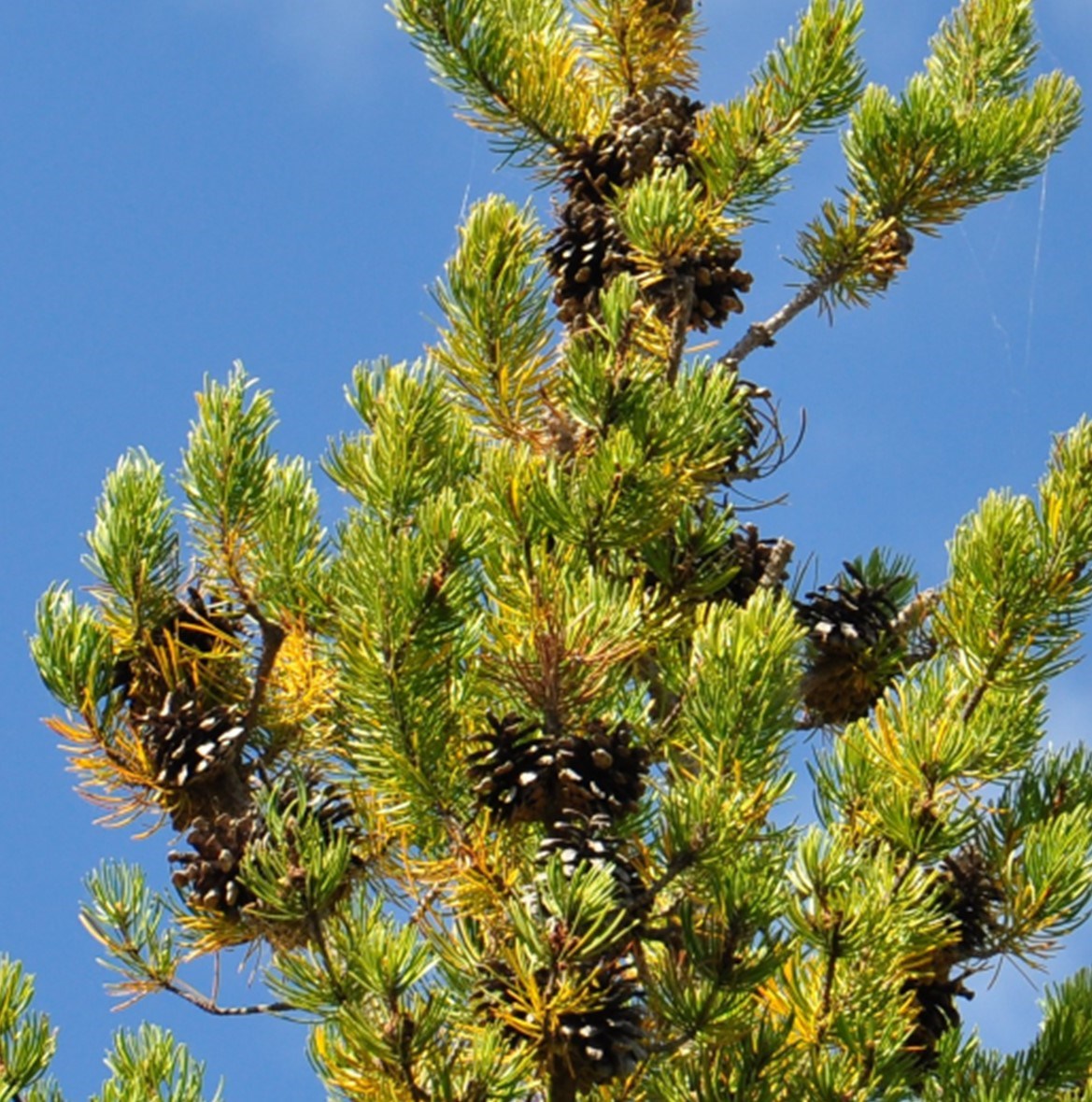Last updated: December 7, 2023
Article
Investigating Jack Pine Cone Serotiny on a Dynamic Barrier Spit

NPS photo
Serotiny
Serotiny refers to the ability of some tree species to retain seeds in their crowns for years until a disturbance, such as fire, creates conditions that promote their release. Nonserotinous cones also exist that release seeds more regularly in response to site conditions. Jack pine (Pinus banksiana) displays this diverse and adaptive genetic tendency which allows species to maintain populations under variable site conditions and disturbances. This ability is linked to natural disturbance history (Radeloff et al, 2003). The purpose of this study was to compare jack pine cone serotiny in Great Lakes coastal habitats at different successional stages (open beach and forested).

NPS photo
Two Types of Cones
Temporary tree stem plots (10-m radius) were assessed in beach (n=4) and forested (n=15) habitats and the following was recorded in each plot: the number and species of trees, the bole diameter, and distance between trees and the plot center. Tree cores were also obtained. In addition, the number of pine cones on 4 branches in the upper 1/3 of trees were counted and grouped into open (non-serotinous), closed (serotinous), and new cones categories.
Most cones were of the non-serotinous type in both zones, although the percent was higher in the beach habitat. The percent of open cones in the beach zone ranged from 61-83% while it ranged from 29-93% in the forested zone.

NPS graphic
This lower serotiny level in jack pine on an island is consistent with other work (Gauthier et al., 1996). In addition, the greater percent of open cones in the areas surveyed indicates that the trees have been responding to the dry site conditions rather than past fires for reproduction. Understanding this serotinous characteristic is important because a single crown fire can promote more serotinous cones (Hernandez-Serrano et al., 2013) and reduce this polymorphic genetic variability quickly in a population. Maintaining a mix of both reproductive strategies ensures continuity of jack pine in both lower and higher fire disturbances and is “crucial for their conservation” (Radeloff et al., 2003). This is especially important considering climate change, which will likely influence historic fire regimes.
Long Island Changes Over Time


Top image
Long Island 1938
Credit: NPS photo
Bottom image
Long Island 2015
Credit: NPS graphic
Long Island is the primary location that supports jack pine in the park. The island is unique in several ways. The other 20 islands are underlain by Precambrian sandstone bedrock (Nufar and Dalles, 1987) while Long is estimated to have formed between 1,050 and 1,700 years ago (Bona, 1990), and it is the only sand barrier spit in the park. Formation occurred in response to the Kakagon River mouth shifting from the southern Chequamegon Bay side to the northern open lake. This transition provided enough sediment via longshore currents for the spit to form. Over time the island accumulated sediment on the north side and eroded on the south. As the 1938 and 2015 aerial photos show, this transition continues even in recent times with an accumulation of 36 acres of new habitat (in red at right) within the past century. (see slider above)
Tree Ages
This map shows ages of jack pine trees in beach and forested habitats. The darkest blue corresponds to the oldest trees while the lightest indicates younger individuals. The youngest trees are all in habitat formed after 1938. This is consistent with expectations due to when the beach and dune area formed. The tree ages further inland suggest a young forest at this site.

NPS Graphic

NPS graphic
References
Bona, L. 1990. Geomorphology and recent geologic history of Long Island, Apostle Islands National Lakeshore, Wisconsin. M.S. thesis, University of Wisconsin-Madison, Madison-Wisconsin.
Gauthier, S., Bergeron, Y., and J. Simon. 1996. Effects of fire regime on the serotiny level of jack pine. Journal of Ecology, 84:539-548.
Hernandez-Serrano, A., Miquel Verdu, Santiago C. Gonzalez-Martinex, and J. Pausas. 2013. Fire structures pine serotiny at different scales. American Journal of Botany 100(12): 2349-2356.
Nufar, E. and M. Dalles. 1987. A guidebook to the geology of Lake Superior’s Apostle Islands National Lakeshore (and nearby areas of the Bayfield Peninsula of Wisconsin). Privately published, Platteville, WI. 74 pp.
Radeloff, V., Mladenoff, D, Guries, R, and M. Boyce. 2003. Spatial patterns of cone serotiny in Pinus banksiana in relation to fire disturbance. Forest Ecology and Management 189 (2004)133-141.
For more information contact peggy_burkman@nps.gov
